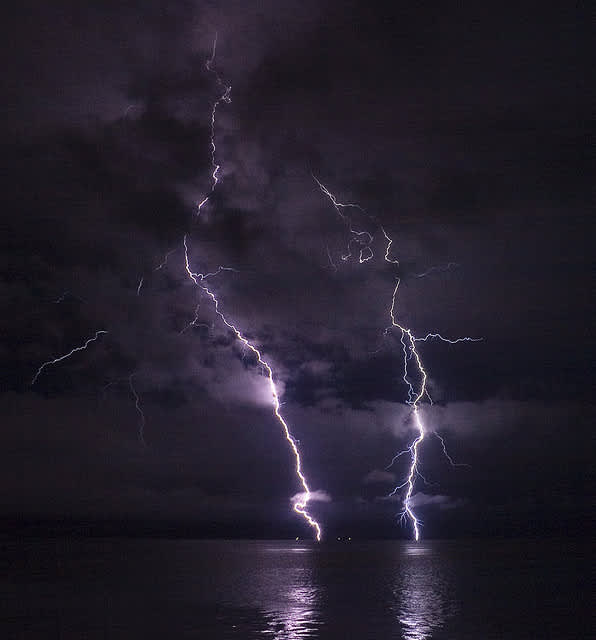NOAA Finds Anglers More Likely to be Struck by Lightning
OutdoorHub Reporters 06.26.13

A recent study by the National Oceanic and Atmospheric Administration show that anglers are the Americans most vulnerable to lightning strikes. In fact, the agency recently released a safety awareness message that warned anglers are three times more likely to be struck by lightning than golfers.
This is because between the years of 2006 and 2012, over 11 percent of the deaths caused by direct lightning were fishermen. The second highest number belonged to campers, and just trailing behind were boaters. Men were much more likely to be struck than women and more than 70 percent of deaths occurred in the summer months.
You can view the video below:
Anglers have a reputation for hitting the water in rain, sleet or hail, While a point of pride, fishing in rough weather can be dangerous and experts advise sportsmen to seek cover as soon as a thunderstorm begins. A majority of incidents happened because the victims did not seek cover early enough.
NOAA also debunks several long-held lightning myths:
Myth: Structures with metal, or metal on the body (jewelry, cell phones,Mp3 players, watches, etc), attract lightning.
Fact: Height, pointy shape, and isolation are the dominant factors controlling where a lightning bolt will strike. The presence of metal makes absolutely no difference on where lightning strikes. Mountains are made of stone but get struck by lightning many times a year. When lightning threatens, take proper protective action immediately by seeking a safe shelter – don’t waste time removing metal. While metal does not attract lightning, it does conduct it so stay away from metal fences, railing, bleachers, etc.
Myth: If trapped outside and lightning is about to strike, I should lie flat on the ground.
Fact: Lying flat increases your chance of being affected by potentially deadly ground
Myth: A lightning victim is electrified. If you touch them, you’ll be electrocuted.
Fact: The human body does not store electricity. It is perfectly safe to touch a lightning victim to give them first aid. This is the most chilling of lightning Myths. Imagine if someone died because people were afraid to give CPR!
Myth: If outside in a thunderstorm, you should seek shelter under a tree to stay dry.
Fact: Being underneath a tree is the second leading cause of lightning casualties. Better to get wet than fried!
Myth: If it’s not raining or there aren’t clouds overhead, you’re safe from lightning.
Fact: Lightning often strikes more than three miles from the center of the thunderstorm, far outside the rain or thunderstorm cloud. “Bolts from the blue” can strike 10-15 miles from the thunderstorm.
More tips on lightning safety can be found on the NOAA website. Lightning safety week runs from June 23 to June 29.

